Jordanian desserts are not only delicious but share a story of the country and its place in the Middle East.
Now I often don’t leave room for dessert after dinner, but in Jordan dessert can happen any time of the day.
I have so many fond memories of having afternoon mint tea of Arabic coffee with Jordanian sweets.
While many desserts in Jordan are similar to desserts in other Middle Eastern countries they are not the same!
And so no visit to Jordan is complete without tasting the desserts of the country that are as lovely as the people I met.
Jordanian Desserts
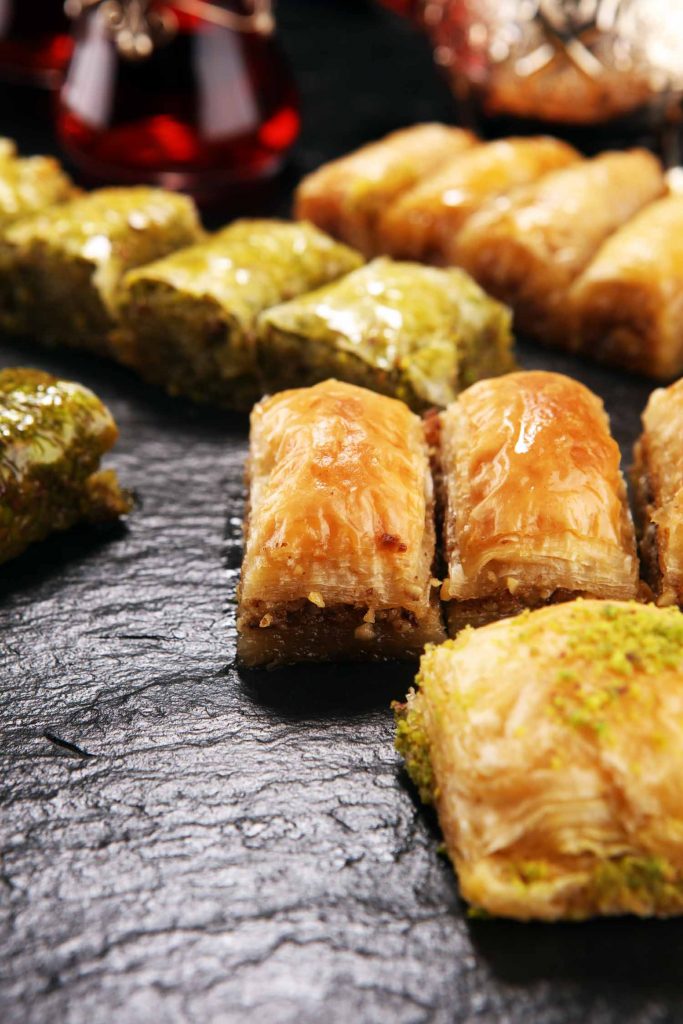
Baklava
Baklava is one of the most popular Jordanian desserts. It is a delicious and rich treat.
Baklava is commonly prepared not only in Jordan, but also in Lebanon, Turkey, Greece, Bulgaria, Macedonia, the Balkans and as far as the United States.
It originated from the Ottoman Empire which dominated North Africa, Southeastern Europe and Western Asia from the 14th century until the 19th century.
In Jordan, baklava is found in bakeries, street and pastry shops in the capital city of Amman and the rest of the Kingdom.
It is typically made of dough layered and brushed with honey syrup, powdered sugar, or homemade syrup, which includes lemon juice, orange flower water, or rosewater.
The stacked thin phyllo sheets made of basic flour and water mixture are filled with finely chopped or crushed pistachio, nuts, hazelnuts, walnuts or almonds.
Jordanian Food
Warbat
The same with the first domesticated olives, warbat is a national treasure.
It is originally from the Kingdom of Jordan. Similar to the olive harvest and olive oil, warbat holds a significant part in the Kingdom’s culture.
Originally from Jordan, Warbat is also a common staple in Middle Eastern countries. This Jordanian pastry is often filled with custard or cream.
Warbat is quite similar to baklava, made of stacked thin phyllo dough that is soaked sugar syrup, stuffed and stacked.
Other versions are stuffed with crushed nuts, pistachio nuts, almonds, walnuts, or sweet cheese.
Warbat is also popular in Lebanon and is called shaabiyat. Warbat served with cream is called warbat be gishta.
This Jordanian recipe is best enjoyed with strong Arabic coffee to balance the sweetness.
‘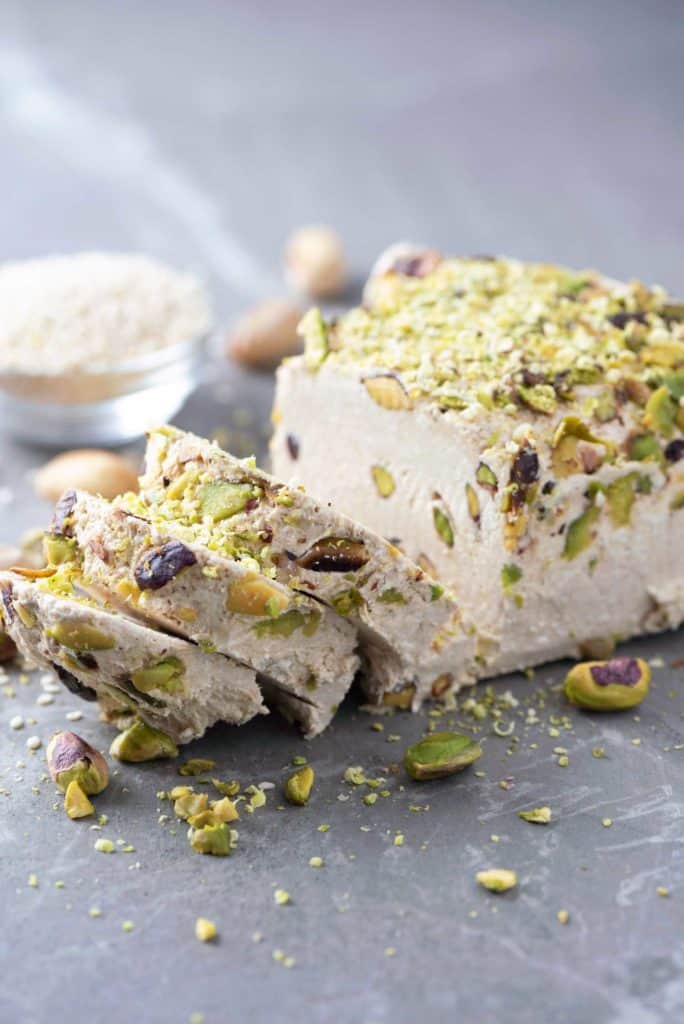
Halva
Desserts in Jordan or sweet Jordanian food recipes are usually made of nuts and flour/wheat and tahini just like halva.
Like other ancient Eastern food recipes, halva is prepared with simple ingredients using a simple cooking method.
This Jordanian cuisine is a mixture of tahini, sugar and saponoria or soapwort, to give the base a crumbly texture.
Pistachio nuts, pine nuts, almonds, sesame seeds, vanilla, or chocolates are also incorporated to add flavor.
Once firm enough after several hours in the fridge, halva is served and topped with nuts.
Halva comes in different sorts and flavors depending on the region. There is plain halva, sweet halva with a crumbly texture.
Due to its popularity, halva is a popular street food dessert in Jordan.
Jordanian Stewed Chicken
Hareeseh
If you love Jordan desserts, hareesh will never disappoint.
Hareesh is made of semolina, flour from durum wheat, a type of wheat grown in the Middle East.
It also includes other baking ingredients like baking soda, baking powder, thick cream, melted butter and Greek yogurt.
Hareesh is an easy to prepare Middle Eastern food. It has a uniquely rich texture, is irresistibly delicious and tastes better than your regular cake.
Hareesh is referred to as namoura in Lebanese, basbousa in Egypt, revani in Turkey and harrisa in Palestine.
Each region has different names and takes on this traditional Jordanian food. However, all variations in size and texture are soaked in sweet syrup topped with almonds.
‘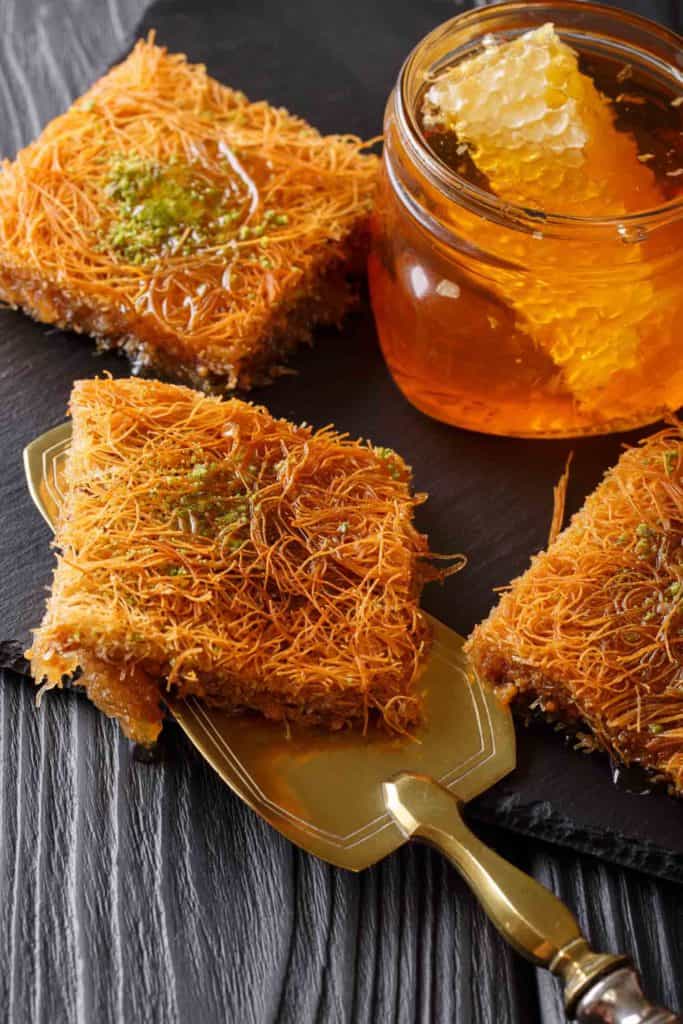
Kanafeh
Food recipes in Jordan are deeply influenced by its geographical location.
Bordered by Syria, Iraq, Saudi Arabia, Israel and Palestine, it is no wonder Jordanian dishes usually served in Hashem restaurant.
Just like kanafeh or knafeh, another classic Middle Eastern dessert that has all sorts and varieties.
Jordanian kunafe or kanafeh is a sweet pastry made of thin filo strands and cheese filling.
Amman Cooking Class
The very thin strands of phyllo dough are soaked in sugary syrup made with cardamom, cinnamon stick, lemon and rose water.
Goat cheese, ricotta, or mozzarella, or a combination of any of the three will be used as fillings.
Other variety of kanafeh pastry is made of semolina dough, kadayif noodles and myahara (a combination of semonila and kadayif).
Kanafeh is usually served drenched in syrup and sprinkled with sliced almonds, chopped walnuts, or raisins.
‘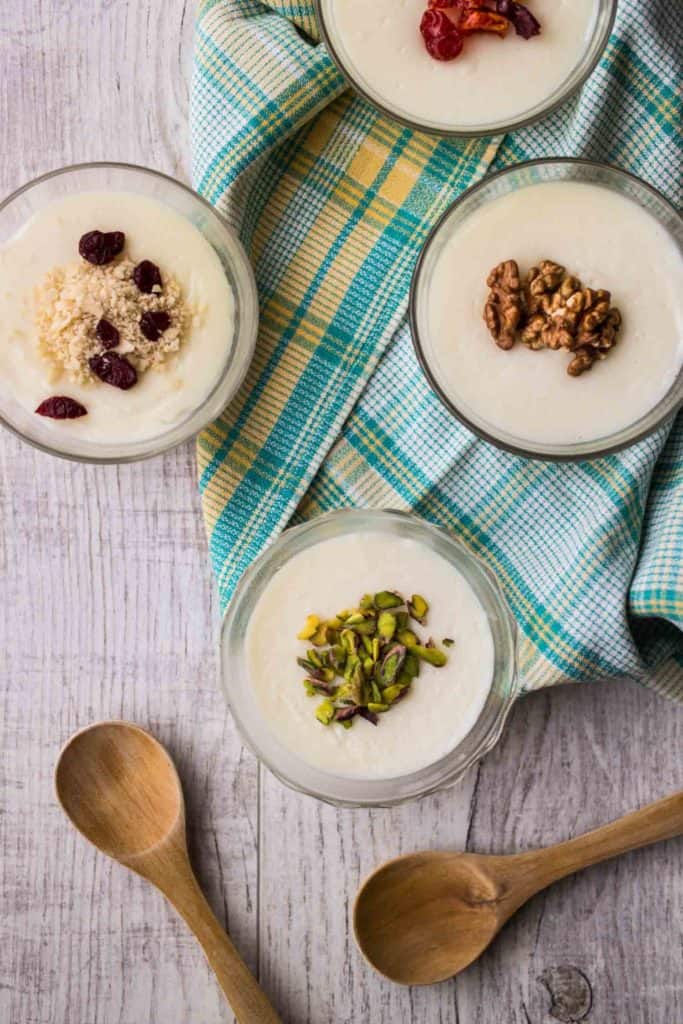
Muhallabia
This is the perfect dessert for celebration and festivity. Muhallabia or mahalabia is creamy, rich in flavor and one of the delicately flavored desserts in Jordan.
Muhallabia is simple, delicious and indulging.
The Jordanian version of Muhallabia is made of mixed ground rice, cornflour, milk, sugar, rose water, chopped almonds, or pistachio.
Give yourself a sweet treat but do not forget to share the calories with family or friends.
Photos of Amman
Umm’Ali
This is one of the desserts in Jordan that is often found in family meals.
This is a dish similar to a bread and butter pudding.
However, instead of bread Jordanians use pastry as the bread element of the dish.
This is combined with pistachios, raisins and coconut flakes, before receiving a generous measure of sugar.
The umm’ali is then baked until the dish has a golden crust. Finally it is sprinkled with cinnamon to serve.
‘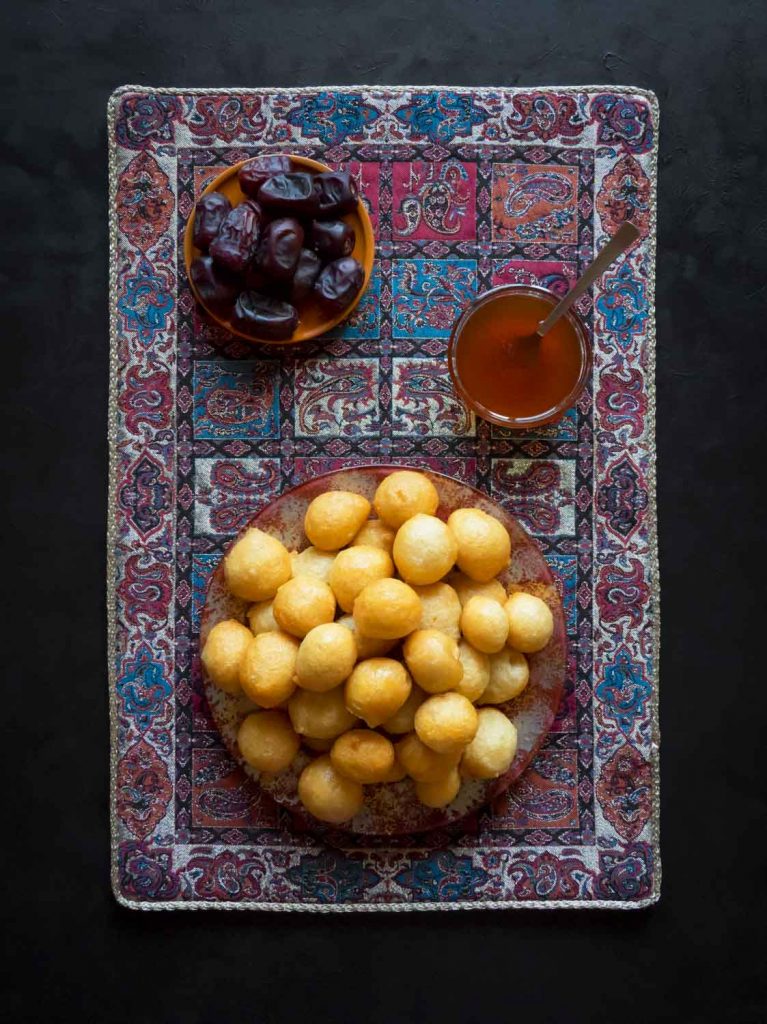
Awwameh
Jordan is not only famous for its aromatic and flavorful dishes such as: traditional pita bread, Jordanian bread ka’ak, hummus, Jordanian style rice dish. But also for its delicious desserts like awwameh.
Aawwameh is traditionally made during Ramadan, it Arabic it means floater.
It is not only one of the most popular Jordanian desserts served during the months of fasting.
It is also well-liked by millions around the world because it is delicious, affordable and easy to prepare.
The original recipe is only made of all-purpose flour, cornstarch, oil, cardamom powder, dry yeast, cooking oil and honey for garnish.
However, over the time different flavors and ingredients have been added to this recipe for a modern twist.
Ramadan Food
Mix all the ingredients, scoop a portion and make a ball, then fry. But you can also add fillings like cheese.
Drizzle with honey before serving.
Awwameh is known as loukoumádes in Greece, lokma in Turkey, luqma al qadi in Arab nations. It is usually paired with Arabic coffee.
This is also served with other Jordan desserts during special occasions.
Zalabya / Zalabia / Zalabiyeh
This Jordanian dessert is similar to awwameh, it is a doughnut or fritter that is made on Epiphany.
It is considered much more flavorful than awwameh. It’s a semolina dough base with black sesame seeds this is fried.
Zalabya is an ancient dessert and has evolved in other countries, for example with jalebi in Pakistan and India where it is a common Diwali festival food. You can also find variations of it in Western Asia and Africa.
‘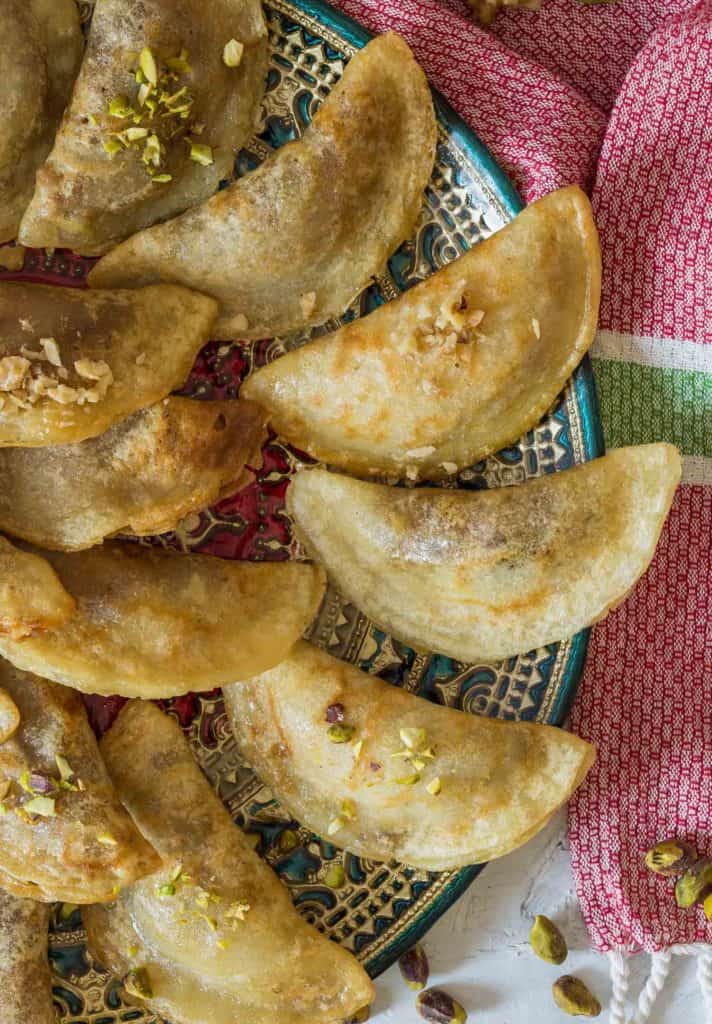
Qatayef
Whether you are on a business or leisure travel to Jordan, the trip isn’t complete without trying this famous Arab dessert.
Qatayef is a yeasted pancake mix stuffed with crushed nuts, golden fried and drizzled with sugary syrup.
Qatayef is the star of the Ramadan season. It is packed with flavor, sweetness and crunchiness in an iconic crescent shape.
Other variations of Qatayef depending on the region. It can range from savory to sweet, crunchy to soft, baked or fried. It may also include nuts, cream, cheese, or chocolate for that modern twist.
The Jordanian version is nutty, bursting with syrup in every bite and crunchy outside.
Barbarah / Burbara
This Jordan dessert is eaten on the Christian holiday of Saint Barbara on December 4.
It is almost like a porridge made of wheat berry cooked in spices like fennel seeds, cinnamon, anise and then topped with sugar and a variety of choices including coconut, dried fruit, pomegranate seeds or candy coated fennel.
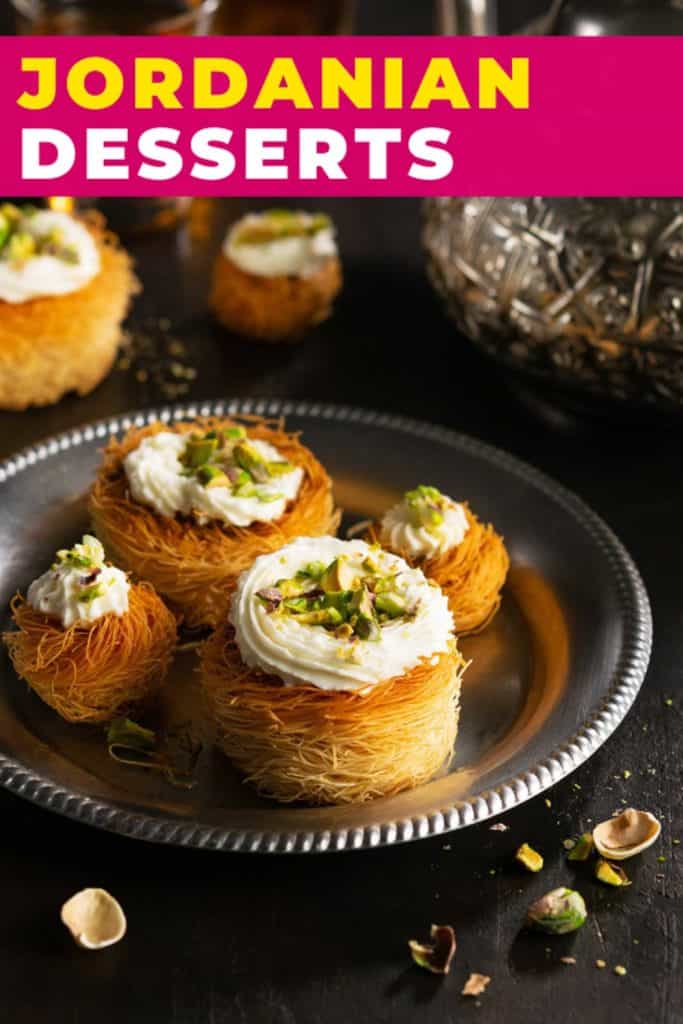
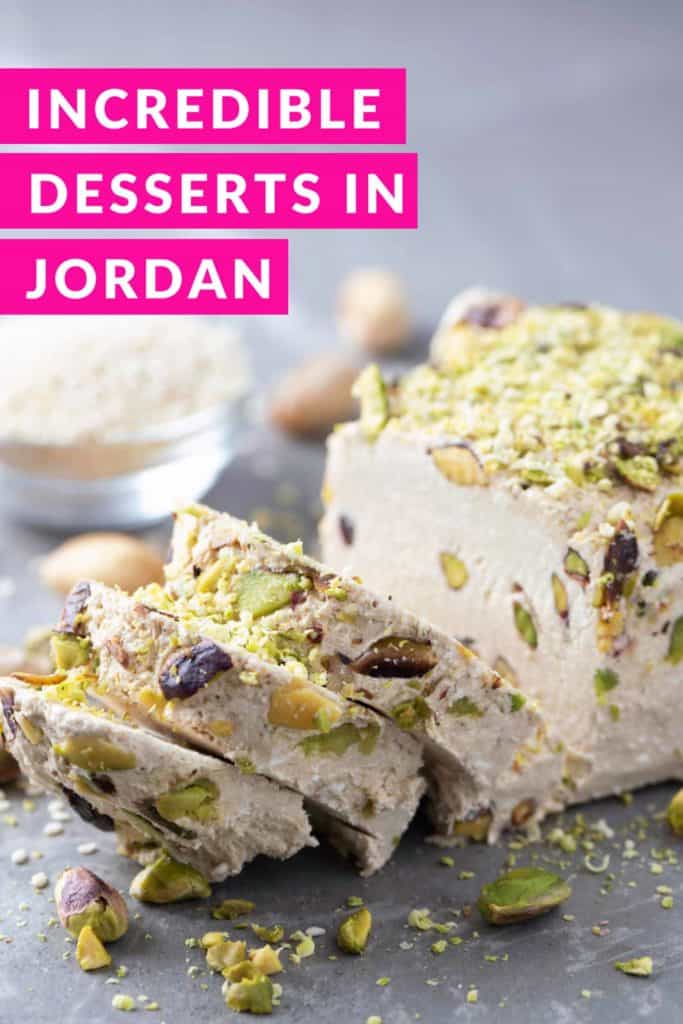
Thank you for highlighting Jordanian sweets!
Just a few notes/additions:
It’s called hareeseh not thareesh 🙂
luqaimat is called awwameh in Jordan (Arabic for floater). On the same note there is Zalabya which we make on epiphany and its much more flavorful than awwameh as it has black seeds, sesemee, and then fried… its more dough like than awwameh.
Also, must mention barbarah which we make on saint Barbara’s feast day, it’s made of wheat cooked in spices like fennel seeds, cinnamon, anis, etc… With sugar and then topped with lots of yummy sweet toppings.
And sahtain 🙂
thank you SO much for commenting, I am going to revise this to reflect your knowledge!
I ate so much halva when I was living in Jordan while studying abroad in college. My host family used to buy pistachio halva that came in a smallish (think: jumbo ice cream tub sized) bucket–I’ve tried unsuccessful for years to find it. I loved this post, thanks for sharing!